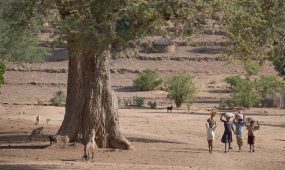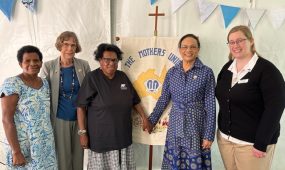Who makes the news?
News
“It will take at least 67 more years to close the average gender equality gap in traditional news media worldwide, shows the 6th Global Media Monitoring Project, the largest research and advocacy initiative in the world on gender equality in news and journalism,” reports the World Association for Christian Communication

It will take at least 67 more years to close the average gender equality gap in traditional news media worldwide, shows the 6th Global Media Monitoring Project, the largest research and advocacy initiative in the world on gender equality in news and journalism.
This was among the key findings presented by the initiative in a report released on 14 July.
The report includes data and analysis on gender in COVID-related news stories, and for the first time, the roles of Indigenous peoples, people living with disabilities, racialised groups, and elderly people in the news.
The report notes some ongoing gaps in gender equality in the news. Stories on gender-based violence hardly make the major news of the day and in the 1% of times that they do, women and girls are severely underrepresented as subjects and sources.
The report also notes that, though the #MeToo movement has boosted news coverage of sexual harassment and rape in the workplace, stories about #MeToo tend to focus on white, wealthy female subjects—even while sexual harassment and rape are a pervasive workplace experience for women of color.
People of color, immigrants and women from marginalized communities continue to lack visibility in the press, not only in #MeToo-related coverage but across virtually all topic areas.
Marianne Ejdersten, WCC director of communication, noted that the representation of women in the news doesn’t reflect the real world.
“What does this do to our perceptions and our discourse—not only now but for generations to come?” asked Ejdersten.
“Within our communities, within our churches, let us all do what we can to ensure we not allow but encourage women to tell their stories—and that we take time to genuinely listen when they do.”
Advertisement
The report does contain some positive milestones. Between 2015 and 2020, the needle edged one point forward to 25% in the proportion of subjects and sources who are women. The single point improvement is the first since 2010 and is most visible in broadcast news media.
After a decade of stagnation, women’s visibility as reporters increased by three percentage points overall across print and broadcast news. Currently, four out of 10 stories in traditional news media are reported by women, compared to 37% since 2005.
Women’s voices as expert sources rose dramatically – up seven points from just five years ago.
Yet findings also show a loss in the quality of stories from a gender perspective. News stories are as unlikely to clearly challenge gender stereotypes today as they were 15 years ago.
Fewer than half of gender-specific stories actually highlight gender (in)equality issues.
Women were also still less likely to be quoted as experts or commentators. News websites (23%) and newspapers (24%) had the lowest percentage of experts in the news who are women.
Advertisement
The findings are drawn from 30,172 stories published last September in newspapers, broadcast on radio and television, and disseminated on news websites and via news media tweets in more than 100 countries.
The Global Media Monitoring Project is coordinated by The World Association for Christian Communication (WACC), a global non-governmental organization that promotes communication rights for social justice.
Learn more about the WACC & the Global Media Monitoring Project
First published on the World Council of Churches website on 14 July 2021.





